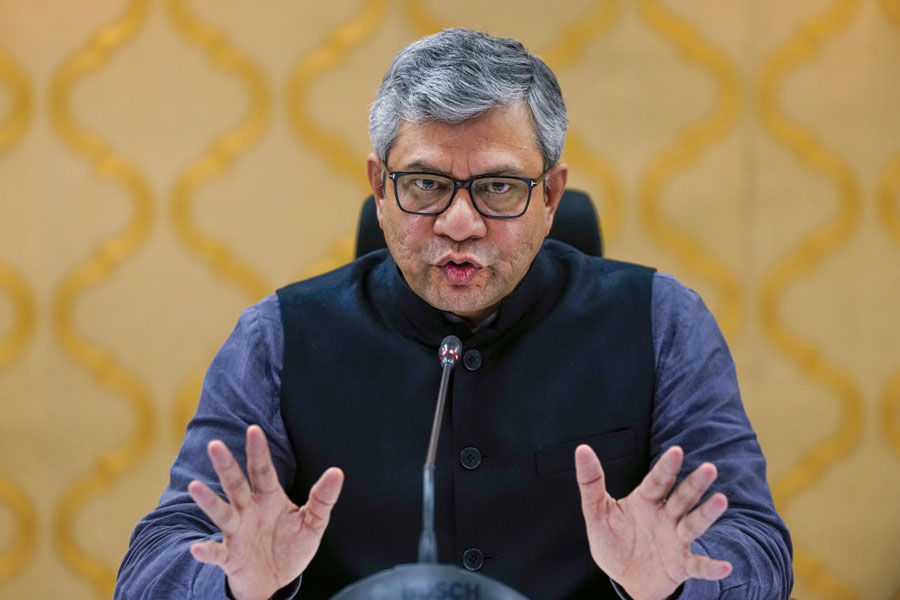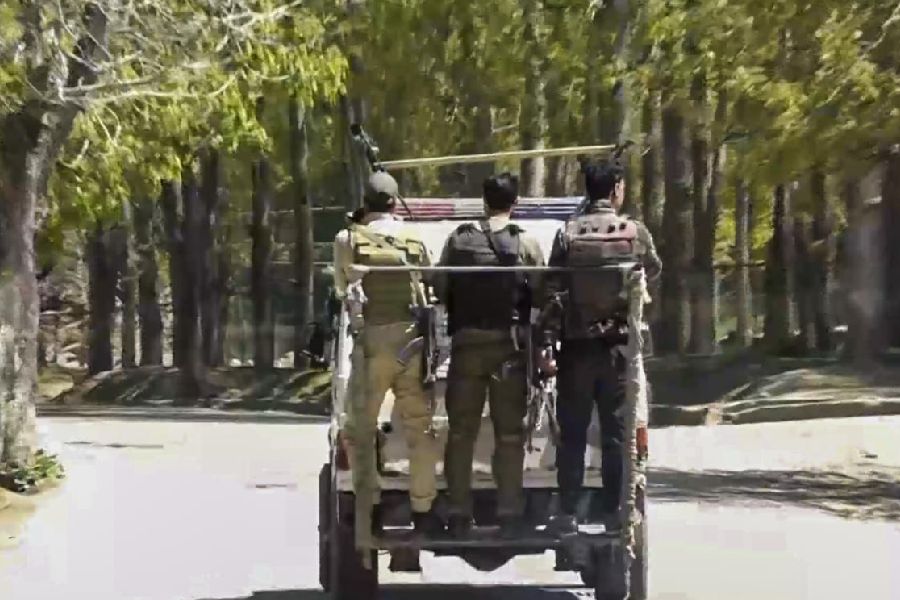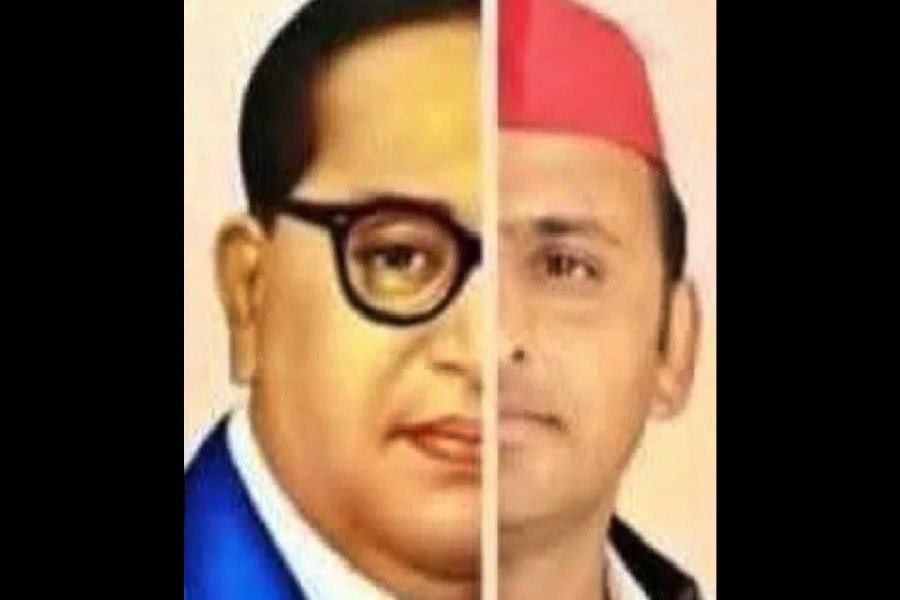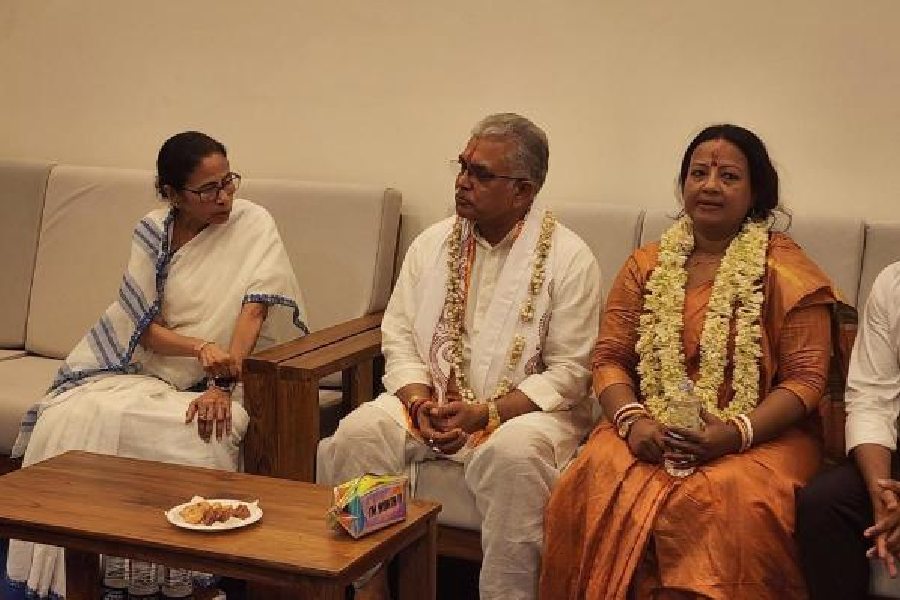 |
| The Action Players rehearse at Gyan Mancha. (Bishwarup Dutta) |
Aroad stretches under the open sky. What if the sky is taken away from it? Does it still remain a road?
Recently mayor Bikash Ranjan Bhattacharyya had to consult several dictionaries for the meaning of the word “road” after Ishan Bose Road, which was about a century old, all but vanished during the reconstruction of the College Street Market (picture below). Structures were built on it and the Trinamul Congress claimed that a street with no sky hanging overhead was not a street.
The street used to run through the old market, dividing it into two blocks. The reconstruction is a joint venture between the Calcutta Municipal Corporation (CMC) and a private company, which built new structures covering the road. In addition, the company in its layout plan had proposed the street as a corridor of the new market building. There was also a proposal to install gates at both ends of the “corridor”.
 |
The mayor, however, has announced that the street will remain open as a thoroughfare and no gate will be allowed. But when the Opposition said that with the upper floors of the new market construction covering Ishan Bose Road, it no longer remains open to the sky but is “a pass” inside a building, the mayor, a lawyer, said: “When the Opposition benches are insisting on an open sky overhead I must say that it is unnecessary because I have consulted dictionaries and the encyclopaedia and in all of them no reference of sky has been found in the definition of road.”
Hence, the corridor can well be treated as a road.
 |
Butler and the brinjal
Are machines taking over the world? The threat was discussed at a seminar on Science and Literature in the 19th Century at Jadavpur University, organised by the department of English. On the dais was scientist Madhav Gadgil from Agharkar Research Institute, Pune. The text he was quoting from was Samuel Butler’s utopian novel Erewhon, published in 1872, in which the author wrote about the possibility of machines developing consciousness and controlling men.
Gadgil talked of “selfish artefacts” which make men end up being “the machines’ way of producing more machines”.
“Arms, fashion, addictive drugs — all these entail huge resource demands. Yet they contribute nothing, and sometimes contribute even negatively to human happiness.” Think AK-47 rifles, eating disorders in size-zero aspirants or addictive crops like opium.
Butler’s prediction is grim — Man will become to machine what horse and dog have become to Man. The solution in Butler’s book is to wage “war to the death” against machines.
But the only war Gadgil wants to wage is against genetically modified crops. As the talk turned inevitably to the genetically modified BT brinjal and BT cotton, Gadgil took a stance as hard as Butler’s. “The claim that they will stop crop loss due to pests is bogus. All pests are not susceptible to BT toxin. Rather, pests susceptible now will evolve resistance to it. The real danger would be the spread of the toxin-producing gene to the wild varieties of the crop through pollination, affecting the entire plant community.”
Should the brinjal be Butlerised?
Climate action
The state will finally have its own climate action plan in place. Prodded by Union environment minister Jairam Ramesh, who recently wrote to all states urging them to come up with their own climate action plans, Bengal looks ready to finalise a course of action.
“The chief minister has given the clearance. Within a month we will organise a workshop where the detailed framework of the state level plan will be decided,” said M.L. Meena, the state environment secretary. A plan drafting committee would be formed after the workshop. The international agency, DFID, has been requested to give advice.
Tender and poetic
If the world is audible to one through a hearing aid, another barely manages to catch the muffled beats of the tabla. Another of the group hears nothing at all. So the youngsters coordinate to counts of 2, 4 and 8. The Action Players have surmounted all hurdles that come from being underexposed teenagers with very little training in dance and theatre to enthrall the audience with their new show, The Pebble and The Taal Tree, staged recently at Gyan Mancha.
The stage is not new for the group. Under the guidance of Zarin Chaudhury, the troupe has earlier performed Badal Sircar’s Hottomalar Opare, Vikram Seth’s Beastly Tales (as Dancing Dolphins) and Satyajit Ray’s Potolbabu Film Star.
Pebble... translated equally well into the language of Deaf Theatre. Here The Action Players not only extends the tales of Bengali writer Bonophool — in terms of background and characters — but also reads into them.
“Working on these short stories we realised how very tender, poetic, deep and layered they are,” said Chaudhury. “Yet the subtle nuances could be communicated through Deaf Theatre. I believe it’s time that Deaf Theatre was recognised as an independent genre that embraces all mediums of expression — mime, voice-over narration, choreography, music and sign language.”
The youngsters have deftly portrayed the many-layered friendship between the tall taal tree and the pebble. The depiction of old Jagattarini harried by a crow, the tale of Parul and the protest march by underwater creatures left the audience in splits and in tears.
Zarin has Shanno Begum and Jhooma Sircar, two youngsters from the Oral School for Deaf Children, as co-directors. The group does not get government funds and Zarin encourages her actors to find other avenues of employment because theatre should “never be done for livelihood”. So the actors divide time between their careers and rehearsals. “But it is an absolute challenge to them so they give it their best shot,” says Zarin.
(Contributed by Deepankar Ganguly, Sudeshna Banerjee, Jayanta Basu and
Sebanti Sarkar)










